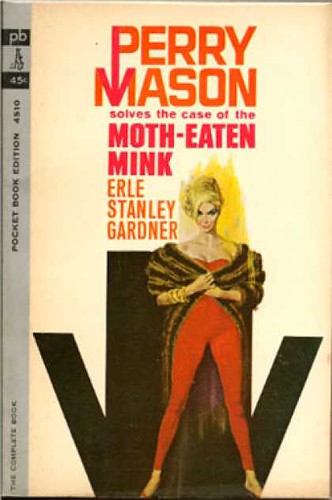
A waitress named Dixie recognizes a customer who wants her dead. She runs out through the kitchen and into the alley where she sees a car driven by some men with guns who would like to give her a ride home and so she turns the other way and is hit by a passing motorist. In her rush to leave the restaurant, Dixie leaves behind her pay cheque and her mink coat. Now, to leave behind a mink coat, you'd have to either be crazy or in a lot of trouble. The restaurant's owner, Morris, knows that she is in a lot of trouble and so he hires one of his regular customers without explaining why he needs a lawyer. That regular customer is Perry Mason, a celebrated criminal lawyer who just happens to solve every case before the cops do and is able to prove the innocence of his client by doing so. Perry Mason is obliged to accept Morris and Dixie as his clients because he loves the steaks that Morris serves and it is so hard to find a good regular restaurant to go to. In the course of investigating, Perry Mason (followed closely by the Homicide Department) along with his secretary Della Street and his permanently retained private detective Paul Drake uncover a large bookmaking operation with a hotel as a front, a pawned engagement ring, a suspected cop killer and a dead bookie. All of which leads to finding out who the real cop killer, most unpleasant.
Erle Stanley Gardner wrote over 80 Perry Mason novels, roughly one every six months for 40 years. Yes, his novels do follow the same basic plot structure, where the characters are introduced, a crime is committed, Perry's client is accused of murder, Perry and his crew investigate, a trial is held and Perry figures out who the real murderer is in a dramatic courtroom coup. But what makes the novels exciting is figuring out whodunit, how Perry figured it out and what the confession will be like. What separates Gardner's work from pulp is his writing style. Everything is written in plainly and very straight forward, however, from the first paragraph to the last, the action never stops and each page is filled with red herrings and plot twists. Even in this book, there is a shocking revelation in the last sentence.
Because Gardner's work was so popular, it's easy to find a copy of this, or any other of his books, like in the dollar bin outside your favourite used bookshop.
This novel was adapted as part of a television series, which I will be writing a post about for tomorrow.

No comments:
Post a Comment